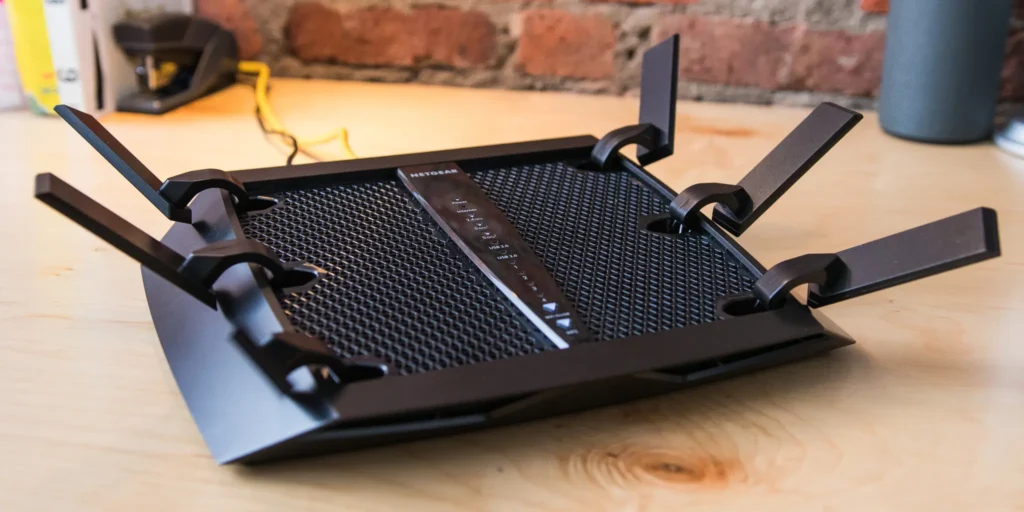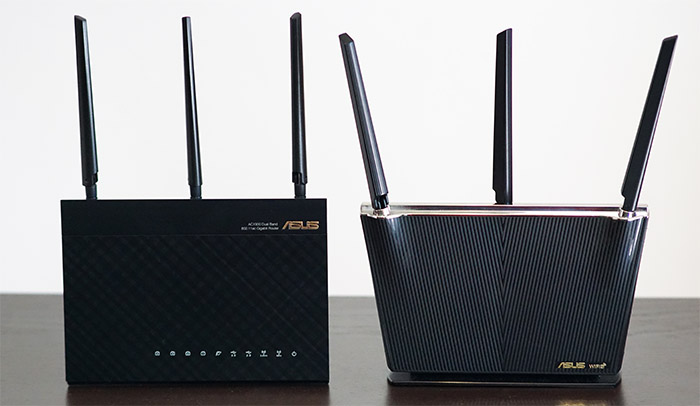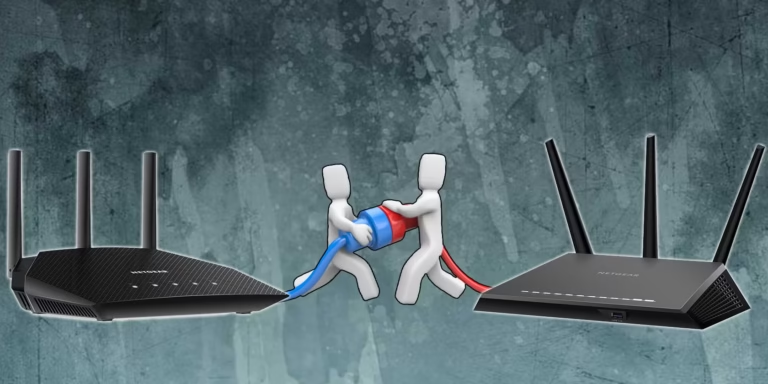is it bad to have 2 wifi routers
Picture this: Your internet is crawling in the bedroom. Your smart TV keeps buffering in the living room. Meanwhile, your home office has perfect connectivity. Sound familiar? Many homeowners face this exact dilemma and wonder if it’s Bad to Have two wifi routers as a solution.
The truth is, adding a second Bad to Have Two wifi router seems like an obvious fix for coverage problems. However, the reality isn’t that straightforward. While two wifi routers can dramatically improve your wireless network coverage, they can also create serious network conflicts if not configured properly.
Is it bad to have two wifi routers in your home? The answer depends entirely on how you set them up. When done correctly, using two routers can eliminate dead zones and boost performance. When done wrong, multiple routers can actually slow down your internet and create frustrating connectivity issues.
In this comprehensive guide, we’ll explore when using Bad to Have two wifi routers makes perfect sense for your home network. We’ll also uncover the hidden problems that can occur and show you exactly how to avoid them. By the end, you’ll know whether adding a second router is the smart move for your specific situation.

When Two WiFi Routers Actually Make Perfect Sense
Not every home needs multiple routers. However, certain situations call for this setup. Let’s examine when adding a second router becomes necessary.
Large Homes with Dead Zones
Homes over 2,500 square feet often struggle with single router coverage. Thick walls, multiple floors, and long distances create wireless dead zones. In fact, a typical router covers about 1,500 to 2,000 square feet effectively.
Consider Sarah’s three-story Victorian home. Her main router sits in the basement office. The third-floor bedrooms barely get one bar of signal. Adding a second router on the second floor solved her coverage issues completely.
Extending WiFi to Outdoor Areas
Many homeowners want internet access in their backyard, garage, or pool area. A single indoor router rarely provides adequate outdoor coverage. Metal siding, brick walls, and distance all weaken the signal significantly.
For example, Mike wanted WiFi in his detached garage workshop. His main router couldn’t penetrate two exterior walls. A second router placed near a window dramatically improved his garage connectivity.
Separating Networks for Security
Some households benefit from separate networks. Parents might want to isolate smart home devices from Bad to Have their main computers. Small business owners working from home need guest networks for clients.
Two routers allow complete network separation. This setup prevents potential security breaches between different device types. It also helps manage bandwidth allocation more effectively.
High-Bandwidth Households
Homes with numerous devices often overwhelm a single router. Consider a family with:
- Four smartphones
- Three laptops
- Two gaming consoles
- Smart TV streaming services
- Multiple smart home devices
Each device competes for bandwidth. A second router can distribute this load more evenly across your home network.
The Hidden Problems with Multiple Routers
While two wifi routers can solve coverage issues, they often create new problems. Understanding these challenges helps you make an informed decision.
Network Conflicts That Slow Everything Down
The biggest issue with multiple routers involves network conflicts. These problems aren’t always obvious but can severely impact performance.
IP Address Conflicts
Most routers use the same default IP address range (192.168.1.x). When two routers operate simultaneously, they create addressing conflicts. Devices get confused about which network to join. This confusion leads to slower speeds and connection drops.
Think of it like having two houses with the same street address. Mail carriers wouldn’t know where to deliver packages. Similarly, your internet data gets lost between conflicting networks.
DHCP Server Battles
DHCP servers automatically assign IP addresses to your devices. Two routers running DHCP create a problematic situation. They compete to assign addresses, often giving the same address to different devices.
This competition causes network instability. Devices might lose internet access randomly. Web pages load slowly or not at all. Online gaming becomes nearly impossible due to connection issues.
Double NAT Problems
Network Address Translation (NAT) helps manage internet traffic. However, running two routers creates “double NAT” – a networking nightmare.
Double NAT prevents certain applications from working correctly. Online gaming suffers the most. Video calls experience delays. Some streaming services refuse to connect entirely.
WiFi Interference Issues
Multiple routers operating nearby often interfere with each other. This interference reduces overall network performance significantly.
Channel Overlap Problems
WiFi routers broadcast on specific channels. In the 2.4GHz band, only three channels avoid overlap completely. Two routers using nearby channels create interference patterns.
This interference manifests as:
- Slower download speeds
- Frequent disconnections
- Poor streaming quality
- Increased latency for gaming
Signal Competition
When two routers broadcast with similar signal strength, devices get confused. They constantly switch between networks seeking the strongest signal. This switching process wastes time and reduces performance.
Imagine trying to listen to two people talking simultaneously. You’d miss parts of both conversations. Bad to Have WiFi devices experience similar confusion with competing signals.
Management Complexity Nightmares
Multiple routers significantly complicate network management. Simple tasks become frustrating experiences.
Multiple Network Names
Each router creates its own network name (SSID). Users must remember which network provides the best coverage in each room. Guests get confused choosing between “HomeWiFi” and “HomeWiFi_2”.
Different Security Settings
Maintaining consistent security across multiple routers requires careful attention. Different passwords, encryption methods, and access controls create security gaps. One poorly configured router compromises your entire network.
Troubleshooting Headaches
Network problems become harder to diagnose with multiple routers. Is the issue with router one or router two? Which device is connected to which network? These questions complicate technical support calls significantly.
Smart Ways to Set Up Two Routers Correctly
If you decide multiple routers are necessary, proper configuration prevents most problems. Here are three effective approaches.
Converting Your Second Router to Access Point Mode
The easiest solution involves converting your second router into an access point. This configuration eliminates most networking conflicts while extending coverage.
How Access Point Mode Works
In access point mode, the second router stops acting like a Bad to Have router. Instead, it becomes a wireless bridge that extends your main network. All devices connect to the same network with identical settings.
Benefits include:
- Single network name for easy management
- No IP address conflicts
- Consistent security settings throughout
- Seamless roaming between coverage areas
Basic Setup Steps
- Connect the second router to your computer via ethernet cable
- Access the router’s admin panel through your web browser
- Navigate to the wireless settings section
- Enable “Access Point Mode” or “Bridge Mode”
- Configure the same network name and password as your main router
- Disable DHCP on the second router
- Connect the routers using an ethernet cable
This setup requires running an ethernet cable between routers. However, the performance benefits justify the installation effort.
Modern Mesh Network Solutions
Mesh systems represent the evolution of multi-router setups. They solve traditional problems through intelligent design and seamless integration.
How Mesh Networks Work
Mesh systems use multiple nodes that communicate with each other. Unlike traditional routers, mesh nodes share a single network identity. Devices automatically connect to the strongest signal without manual switching.
Popular mesh systems include:
- Eero Pro 6E
- Netgear Orbi
- ASUS AiMesh
- Linksys Velop
Advantages Over Traditional Multiple Routers
Mesh networks offer several benefits:
- Automatic device handoff between nodes
- Single network name and password
- Centralized management through mobile apps
- Self-healing network capabilities
- Regular firmware updates
However, mesh systems cost more than adding a second traditional router. The investment pays off through simplified management and better performance.

Wired Backhaul Setup for Maximum Performance
Professional installations often use wired backhaul connections. This approach provides the best possible performance for multiple router setups.
Understanding Backhaul Connections
Backhaul refers to the connection between your routers. Wireless backhaul uses WiFi signals between routers. Wired backhaul uses ethernet cables for this connection.
Wired connections offer several advantages:
- No interference between router communications
- Maximum bandwidth preservation for devices
- Lower latency for time-sensitive applications
- More reliable connections during peak usage
Planning Your Cable Installation
Wired backhaul requires careful planning:
- Identify optimal router placement locations
- Plan cable routes through walls or attics
- Consider hiring professional installers for complex runs
- Use Cat6 or Cat6a cables for future-proofing
While installation costs more initially, wired backhaul provides superior long-term performance.
Alternative Solutions Worth Considering
Before committing to multiple routers, consider these alternatives. They might solve your problems with less complexity.
WiFi Extenders vs Additional Routers
WiFi extenders offer a simpler alternative to multiple routers. They amplify your existing network signal without creating separate networks.
How Extenders Work
Extenders receive your router’s signal and rebroadcast it to extend coverage. They maintain your existing network name and settings. Setup typically involves plugging in the device and pressing a button.
Pros and Cons
Advantages:
- Simple installation process
- Lower cost than second router
- No network management complexity
- Works with existing router settings
Disadvantages:
- Reduced speed compared to direct router connection
- Limited placement flexibility
- Potential compatibility issues with older routers
Powerline Adapters for Unique Situations
Powerline adapters use your home’s electrical wiring to extend internet connectivity. They work well in situations where WiFi signals can’t penetrate effectively.
When Powerline Adapters Excel
Consider powerline adapters for:
- Homes with thick concrete walls
- Long-distance connections to detached buildings
- Situations where running ethernet cable is impossible
- Temporary connectivity solutions
Performance Expectations
Powerline performance depends on your electrical system quality. Newer homes with updated wiring see better results. Older homes might experience slower speeds and occasional disconnections.
Upgrading to a Single High-Performance Router
Sometimes the best solution involves replacing your existing router entirely. Modern routers offer significantly better coverage and performance than older models.
Signs You Need a Router Upgrade
Consider upgrading if your current router:
- Is more than five years old
- Doesn’t support WiFi 6 or newer standards
- Struggles with your current device count
- Provides inconsistent performance
High-Performance Router Features
Modern routers include:
- Multiple antenna arrays for better coverage
- Advanced beamforming technology
- Dual-band or tri-band capabilities
- Quality of Service (QoS) management
- Enhanced security features
A single high-end router often outperforms two older routers working together.
Best Practices and Expert Recommendations
Whether you choose multiple routers or alternatives, following best practices ensures optimal performance.
When Multiple Routers Make Sense
Use multiple routers when:
- Your home exceeds 3,000 square feet
- You have significant construction barriers (concrete, metal)
- You need separate networks for security purposes
- A single high-end router still leaves dead zones
- You have specific bandwidth distribution needs
Configuration Tips for Success
If using multiple routers:
- Always use access point mode for the second router
- Connect routers with ethernet cable when possible
- Use different channels to minimize interference
- Maintain consistent security settings across all devices
- Document your network setup for future troubleshooting
Security Considerations
Multiple routers increase your security attack surface. Follow these guidelines:
- Change default administrator passwords on all routers
- Enable WPA3 encryption (or WPA2 if WPA3 isn’t available)
- Regularly update router firmware
- Bad to Have Disable unnecessary features like WPS
- Monitor connected devices for unusual activity
Future-Proofing Your Network
Technology evolves rapidly. Plan for future needs:
- Choose routers supporting WiFi 6E or newer standards
- Ensure adequate bandwidth for growing device counts
- Consider mesh systems for easier expansion
- Plan cable infrastructure for potential upgrades
Making the Right Choice for Your Home Network
The question “is it bad to have two wifi routers?” doesn’t have a simple yes or no answer. The right choice depends on your specific situation, technical comfort level, and budget.
Two routers work well when configured correctly. However, they require more technical knowledge and ongoing maintenance. Mesh systems offer similar benefits with less complexity but cost more initially.
For most homeowners, the following approach works best:
- Try repositioning your existing router first
- Consider a WiFi extender for simple coverage gaps
- Upgrade to a high-performance router if your current model is outdated
- Only use multiple routers for complex situations requiring separate networks
When to Seek Professional Help
Consider professional installation if you:
- Need to run ethernet cable through walls
- Want a whole-home mesh system installed
- Bad to Have a large home requiring multiple access points
- Experience persistent network performance issues
- Need business-grade network reliability
Professional installers ensure optimal placement, proper configuration, and reliable performance. The investment often pays off through better results and time savings.
Remember, your home network forms the foundation of your digital life. Whether you choose one router, two routers, or a mesh system, proper setup and configuration ensure reliable connectivity for years to come.
The key is understanding your specific needs and choosing the solution that best addresses them. With the right approach, you can eliminate dead zones, improve performance, and enjoy seamless connectivity throughout your entire home.
